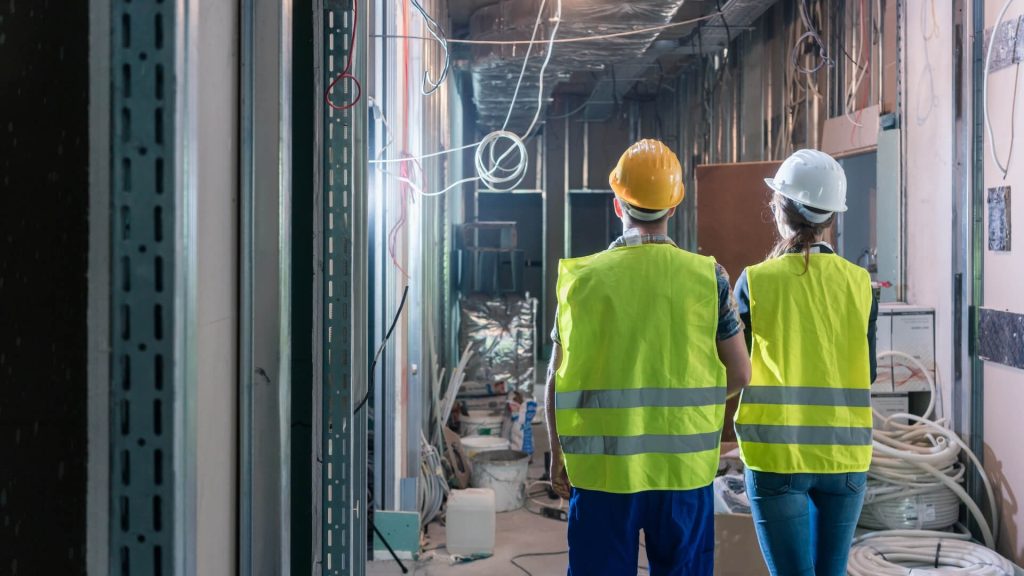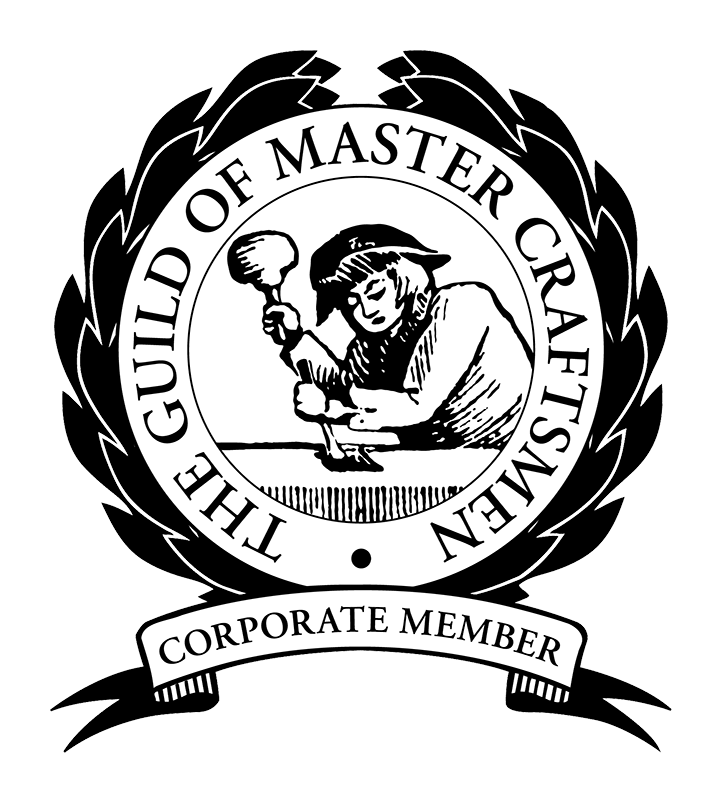Table Of Contents
Principal contractor: Learn their key responsibilities, legal duties, and why they are essential for safe and efficient construction projects. In construction, smooth project management is tough. It involves health and safety, and coordinating contractors. Without proper oversight, things can go wrong. This is where the principal contractor steps in.
Under the UK’s Construction (Design and Management) Regulations 2015 (CDM 2015), a principal contractor is a legal must for any project with multiple contractors. Acting as the project’s backbone, they oversee the construction phase with finesse. They plan, manage, and monitor every detail with precision. Picture them as the vital link, connecting clients, designers, and contractors. With safety and efficiency as priorities, they ensure smooth sailing throughout the build.
What exactly is a principal contractor’s role? Why is it so crucial? And how do they differ from other contractors or on-site managers? Whether you’re a client starting your first project or in construction, knowing this role is key to a project’s success.

This guide explains principal contractors. You’ll learn their duties, legal needs, and impact on projects. By the end, you’ll be ready to tackle this key construction aspect. Get the tools and insights for success!
The Role of a Principal Contractor
In any construction project, keeping everything running smoothly requires clear management and strong leadership. That’s exactly where the role of a principal contractor comes into play. Appointed by the client, their primary responsibility is to oversee the construction phase and ensure that it is safe, efficient, and aligned with legal requirements. But what does this role look like in practice?
Understanding what they do
The principal contractor is essentially the central figure during the construction phase of a project. They are responsible for planning the day-to-day activities, coordinating with various contractors, and making sure that all work complies with health and safety regulations. Their role goes beyond simply managing a site—they create the structure within which a project can succeed.
Imagine a construction site with multiple trades: electricians, plumbers, scaffolders, and decorators all working at the same time. Without a single figure ensuring everyone works in harmony, the chances of delays, safety hazards, or miscommunication would skyrocket. The principal contractor steps in as the organiser, making sure every team knows their role and that tasks are completed on time.
Legal necessity
Under the Construction (Design and Management) Regulations 2015 (CDM 2015), appointing a principal contractor is legally required for projects involving more than one contractor. This includes almost all large-scale construction projects and many smaller ones too. Their role is critical not just for the smooth progression of work but also for meeting regulatory obligations.
Key characteristics of their role
A good principal contractor is more than a manager. They are problem-solvers, leaders, and communicators. They need to:
- Coordinate with all contractors to ensure work flows smoothly.
- Monitor health and safety measures daily.
- Adapt to changing conditions on-site to minimise disruption.
- Keep the client informed of progress, risks, and potential delays.
By bridging the gap between the client, contractors, and designers, the principal contractor ensures that projects stay on track and comply with all necessary standards.
Core Duties and Responsibilities
The responsibilities of a principal contractor extend far beyond basic project management. They are the driving force behind a project’s success, taking responsibility for everything from health and safety to effective communication and task coordination. These duties are not just recommended—they are legally required under the Construction (Design and Management) Regulations 2015 (CDM 2015).
1. Planning and preparation
Before the first brick is laid, the principal contractor must ensure that everything is in place to allow the project to run smoothly. This involves creating a detailed Construction Phase Plan, which outlines:
- The timeline for the project.
- Specific tasks and their deadlines.
- Health and safety measures are required to protect workers and the public.
This plan acts as a blueprint for the entire construction phase, helping to prevent delays and miscommunication.
2. Health and safety management
One of the principal contractor’s most critical responsibilities is maintaining a safe working environment. This includes:
- Conducting site inductions to ensure all workers understand safety protocols.
- Monitoring activities daily to identify and address potential hazards.
- Securing the site to prevent unauthorised access, protecting both workers and the public.
- Providing essential welfare facilities, such as clean toilets, drinking water, and washing stations.
Their role in health and safety cannot be overstated. A well-managed site not only prevents accidents but also ensures compliance with legal requirements, avoiding costly fines or project shutdowns.
3. Coordination and communication
With multiple contractors working on a project, coordination is key. The principal contractor must:
- Vet and appoint contractors to ensure they are qualified for their roles.
- Schedule work in a way that prevents overlap and inefficiencies.
- Liaise with the principal designer to address any risks identified during the pre-construction phase.
- Act as the main point of contact for the client, providing updates and addressing concerns.

Good communication is at the heart of this role. A principal contractor must ensure that every party involved in the project understands their responsibilities and deadlines, minimising misunderstandings that could lead to delays or errors.
4. Ensuring legal compliance
In addition to meeting the requirements of CDM 2015, principal contractors must ensure the project adheres to building regulations and other local laws. This includes:
- Preparing and maintaining the Health and Safety File, which documents the project’s safety procedures for future reference.
- Keeping detailed records of safety measures, progress, and inspections.
- Ensuring all contractors on-site follow the same high standards of safety and professionalism.
When is a Principal Contractor Required?
The need for a principal contractor is not universal for every construction project, but it becomes a legal necessity under certain conditions. Understanding when and why a principal contractor is required helps ensure that projects run smoothly and remain compliant with UK regulations.
Legal requirements under CDM 2015
The Construction (Design and Management) Regulations 2015 (CDM 2015) clearly state that a principal contractor must be appointed in writing by the client for any project involving more than one contractor. This applies to both commercial and domestic projects, although the rules for domestic clients are slightly different.
If a project involves just one contractor, there is no requirement to appoint a principal contractor. However, as soon as multiple trades are involved—such as electricians, plumbers, and scaffolders—a principal contractor must be in place to oversee the construction phase.
Domestic vs. commercial projects
- Commercial projects: The client must formally appoint a principal contractor before any work begins. Failing to do so transfers the legal responsibilities of the principal contractor to the client.
- Domestic projects: For private homeowners undertaking renovations or other construction work, the principal contractor role is automatically assigned to the contractor managing the work unless the client explicitly appoints someone else.
Complexity of the project
The more complex a project, the greater the need for a principal contractor. For example:
- A small refurbishment involving a single contractor, such as a kitchen installation, may not require one.
- On the other hand, a large office refurbishment with multiple trades working simultaneously would necessitate a principal contractor to manage coordination, safety, and compliance.
Failure to appoint a principal contractor
When a principal contractor is not appointed where required, the project can face severe consequences, including:
- Non-compliance with health and safety regulations may lead to fines or project shutdowns.
- Increased risk of accidents due to poor coordination and lack of oversight.
- Legal liability falls on the client, particularly for commercial projects.
Examples of projects requiring a principal contractor
- Large-scale developments: Housing projects, office buildings, or commercial spaces with multiple contractors working on-site.
- Refurbishments: Office or home renovations involving structural work, plumbing, electrical installations, and decoration.
- Infrastructure upgrades: Public projects such as roads, bridges, or utilities that involve various trades and specialists.
Summary
A principal contractor is required whenever multiple contractors are involved in a construction project, ensuring smooth coordination and compliance with legal standards. Their presence guarantees that all aspects of the construction phase—from health and safety to scheduling—are handled professionally and efficiently.
Principal Contractor vs Main Contractor
In construction, it’s easy to confuse the roles of a principal contractor and a main contractor, especially since the two are sometimes carried out by the same organisation. However, they serve different purposes, and understanding their differences is crucial for any successful project.
What does a principal contractor do?
A principal contractor is legally required under the Construction (Design and Management) Regulations 2015 (CDM 2015) for any project involving more than one contractor. They are responsible for managing the entire construction phase, ensuring safety regulations are followed, and coordinating all contractors involved in the project. Their primary focus is on compliance, safety, and effective communication between all stakeholders.
What does a main contractor do?
A main contractor is hired by the client to physically carry out the construction work. They might be responsible for building walls, installing fixtures, or managing a specific part of the project. While they can oversee subcontractors for specialist tasks like plumbing or electrics, their focus is more on completing the work they’ve been contracted to do, rather than overseeing the entire site.

Key differences between the two roles
Here’s how the roles differ in terms of responsibility and focus:
| Aspect | Principal Contractor | Main Contractor |
|---|---|---|
| Legal obligation | Required by law for projects with multiple contractors (CDM 2015). | Not legally required; appointed to perform specific work. |
| Primary focus | Health and safety, coordination, and legal compliance. | Physical execution of tasks, such as building or installation. |
| Scope of work | Oversees all contractors on-site and manages safety plans. | Focuses on the specific work they’re contracted to deliver. |
| Role with client | Acts as the main point of contact for the client regarding the construction phase. | Reports to the client about the specific work they’re performing. |
When the roles overlap
In many projects, especially medium-to-large ones, the same organisation might act as both the principal contractor and the main contractor. For example:
- A construction company handling a commercial office refurbishment might be hired as the principal contractor to manage the safety and coordination while also acting as the main contractor to carry out the construction work itself.
When the roles are separate
There are situations where the client appoints different entities for each role:
- Separate principal contractor and main contractor: On large-scale or highly specialised projects, the client may hire a separate principal contractor to oversee health and safety while a main contractor focuses solely on construction.
- Complex subcontracting: If multiple subcontractors are hired for a project, they may report to the main contractor for task execution but look to the principal contractor for site-wide health and safety guidance.
Why the distinction matters
Understanding the difference between these roles is vital for both compliance and project success. A principal contractor ensures that safety and legal requirements are met, while a main contractor focuses on delivering the physical results. If these roles are not clearly defined, it can lead to miscommunication, delays, or even legal issues.
With these distinctions in mind, it’s clear that both roles are essential, but they serve very different purposes. Knowing when and how to appoint the right individuals or organisations can make all the difference in ensuring a project is completed on time, within budget, and to the highest standards.
Legal Framework and Compliance
The legal obligations of a principal contractor are clearly defined under the Construction (Design and Management) Regulations 2015 (CDM 2015). These regulations are designed to ensure that all construction projects, regardless of size or scope, are carried out safely and with proper management in place. For a principal contractor, compliance isn’t optional—it’s the foundation of their role.
Understanding CDM 2015
The CDM 2015 regulations were introduced to improve safety standards in the construction industry. Under these regulations, the principal contractor is responsible for planning, managing, and monitoring the construction phase of a project. Their duties focus heavily on health and safety, as well as ensuring smooth coordination among all parties involved.
Key requirements include:
- Preparing a Construction Phase Plan before work begins.
- Ensuring all contractors on-site follow health and safety guidelines.
- Liaising with the principal designer to identify and mitigate potential risks.
- Providing welfare facilities, such as clean toilets, drinking water, and washing areas for workers.
When is compliance mandatory?
A principal contractor must be appointed in writing for any project involving multiple contractors. This applies to both domestic and commercial projects. Failure to appoint a principal contractor, or failing to comply with CDM 2015, can lead to:
- Legal penalties for the client or contractors.
- Project delays due to enforcement actions by regulatory bodies.
- Increased safety risks on-site.
Reporting and notifications
The principal contractor also has responsibilities for notifying relevant authorities, such as local building control. These notifications may include:
- Details of high-risk activities taking place on-site.
- The timeline and schedule of the project.
- Confirmation that all safety measures are in place.
For large projects, especially those involving complex operations, ongoing communication with regulatory bodies is critical to avoid fines or work stoppages.

Practical example: Ensuring compliance
Imagine a project to refurbish a commercial office space. The principal contractor must:
- Prepare a construction phase plan outlining safety measures for trades such as electricians and plumbers working simultaneously.
- Conduct regular site inspections to ensure all workers follow safety protocols.
- Maintain a secure site perimeter to prevent unauthorised access by the public.
- Provide records of safety compliance to local authorities when requested.
Without these measures, the project risks non-compliance, leading to costly delays and reputational damage.
The importance of legal compliance
Adhering to legal frameworks like CDM 2015 isn’t just about avoiding fines—it’s about fostering a safe and efficient working environment. By meeting these requirements, the principal contractor ensures that the project remains on track and that everyone involved can work with confidence.
Key Qualities of an Effective Principal Contractor
Being a principal contractor is about more than just managing a construction project—it requires a unique blend of skills, experience, and leadership. A successful principal contractor must not only ensure the project runs smoothly but also create a safe, efficient, and compliant working environment for everyone involved. Here are the key qualities that define an effective principal contractor:
1. Strong leadership and communication skills
A principal contractor serves as the central figure in a project, coordinating between the client, contractors, and designers. This requires exceptional leadership and communication skills to ensure all stakeholders are aligned. An effective principal contractor should:
- Provide clear instructions to contractors and subcontractors.
- Act as the main point of contact for the client, keeping them informed of progress, risks, and changes.
- Resolve conflicts or misunderstandings swiftly to keep the project on track.
Good communication fosters collaboration and reduces the likelihood of delays or mismanagement.
2. Expertise in health and safety regulations
Health and safety are at the heart of a principal contractor’s role. A solid understanding of the Construction (Design and Management) Regulations 2015 (CDM 2015) and other relevant laws is essential. They should:
- Proactively identify potential hazards and implement preventative measures.
- Ensure all workers on-site are aware of safety protocols through inductions and ongoing training.
- Conduct regular site inspections to monitor compliance with safety regulations.
By prioritising health and safety, a principal contractor not only protects workers but also safeguards the project’s reputation.
3. Exceptional planning and organisational abilities
Construction projects are complex, involving tight deadlines and multiple contractors. A principal contractor must excel at planning and organisation to ensure everything stays on schedule. This includes:
- Developing a detailed Construction Phase Plan that outlines timelines, tasks, and safety measures.
- Coordinating different trades to avoid overlaps or delays.
- Monitoring progress and adapting plans when unforeseen challenges arise.
Without proper organisation, even the best-designed projects can face costly setbacks.
4. Experience and technical knowledge
An effective principal contractor brings a wealth of experience to the table, along with technical expertise in construction processes. They should understand:
- Building methods and materials.
- How to assess the competence of contractors and subcontractors.
- The technical requirements of the project, such as structural engineering or energy efficiency standards.
This depth of knowledge enables them to make informed decisions and anticipate potential challenges.

5. Problem-solving and decision-making skills
No construction project is without its challenges. Whether it’s a delay in material deliveries or an unexpected safety issue, a principal contractor must be able to think on their feet and find solutions. Key qualities include:
- The ability to analyse situations quickly and effectively.
- Confidence in making decisions that balance safety, budget, and timelines.
- A calm, solution-focused approach under pressure.
6. Financial acumen
While the principal contractor is not always directly responsible for the project’s budget, they play a significant role in managing costs. This involves:
- Ensuring contractors and subcontractors deliver work on time and within agreed budgets.
- Preventing unnecessary expenses through efficient planning and resource allocation.
- Keeping the client informed of any financial risks or changes to the project scope.
Why these qualities matter
The success of a construction project often hinges on the principal contractor’s ability to lead, organise, and comply with regulations. These qualities are not just desirable—they’re essential for ensuring a safe, efficient, and successful project. Without them, projects are more likely to face delays, safety violations, or budget overruns.
FAQs About Principal Contractors
Many questions arise when discussing the role of a principal contractor, especially for those new to the construction industry or embarking on their first major project. Below are some of the most frequently asked questions, along with clear and concise answers to provide clarity and confidence.
1. What is the main responsibility of a principal contractor
The principal contractor is responsible for managing the construction phase of a project. Their duties include ensuring health and safety compliance, coordinating contractors, and overseeing the project’s timeline. They are legally required to create a Construction Phase Plan, monitor site activities, and liaise with clients and designers to ensure everything runs smoothly.
2. Do all construction projects need a principal contractor?
No, not all projects require a principal contractor. Under CDM 2015, a principal contractor is only required for projects involving multiple contractors. For single-contractor projects, the client or contractor takes on the responsibility for health and safety, but the formal role of a principal contractor is unnecessary.
For example:
- A small kitchen renovation involving one contractor does not need a principal contractor.
- A large commercial office refurbishment involving electricians, plumbers, and builders does.
3. Can a principal contractor also be the principal designer?
Yes, but only in certain circumstances. A principal contractor can take on the role of the principal designer if they have the required qualifications, skills, and experience to oversee the pre-construction phase as well as the construction phase. However, combining these roles is uncommon and only practical for smaller projects where one party has expertise in both design and management.

4. What happens if a principal contractor is not appointed?
If the client fails to appoint a principal contractor for a project that requires one, they automatically assume the responsibilities of the principal contractor. This includes ensuring health and safety compliance and managing the construction phase, which can be a significant burden for clients who are not experienced in construction management.
For domestic projects, if no formal appointment is made, the contractor overseeing the work typically assumes the role by default.
5. How much does it cost to hire a principal contractor?
The cost of hiring a principal contractor varies based on the size, complexity, and duration of the project. Factors influencing the cost include:
- The number of contractors and trades being managed.
- The complexity of health and safety requirements.
- The scope of their responsibilities (e.g., project coordination vs. full project management).
While fees may seem significant, hiring a qualified principal contractor ensures compliance, reduces risks, and often saves money in the long run by preventing delays or safety breaches.
6. Can there be two principal contractors on one project?
No. According to CDM 2015, only one principal contractor can oversee a project at any given time. Having multiple principal contractors would lead to confusion and fragmented accountability. However, there can be a principal contractor for one phase of a project and another for a subsequent phase, such as a handover from initial construction to final finishing works.
7. What documents does a principal contractor need to provide?
A principal contractor must prepare and maintain several key documents during the construction phase:
- Construction Phase Plan: A detailed plan outlining safety measures, timelines, and project coordination.
- Health and Safety File: A record of all safety procedures, inspections, and relevant project information, which is handed to the client upon completion.
- Progress Reports: Regular updates to the client, detailing the project’s status, risks, and any required adjustments.
Conclusion
The principal contractor is an essential figure in any construction project involving multiple contractors. By managing safety, coordinating efforts, and ensuring compliance, they provide the structure and oversight needed for successful project delivery. Whether you’re a client, contractor, or designer, understanding the principal contractor’s role is crucial for navigating the complexities of construction.
If you’re embarking on a new project, ensure you appoint a principal contractor who demonstrates the right blend of expertise, communication skills, and leadership. Their role is not just about ticking regulatory boxes—it’s about creating a safe and efficient environment where every stakeholder can thrive.



